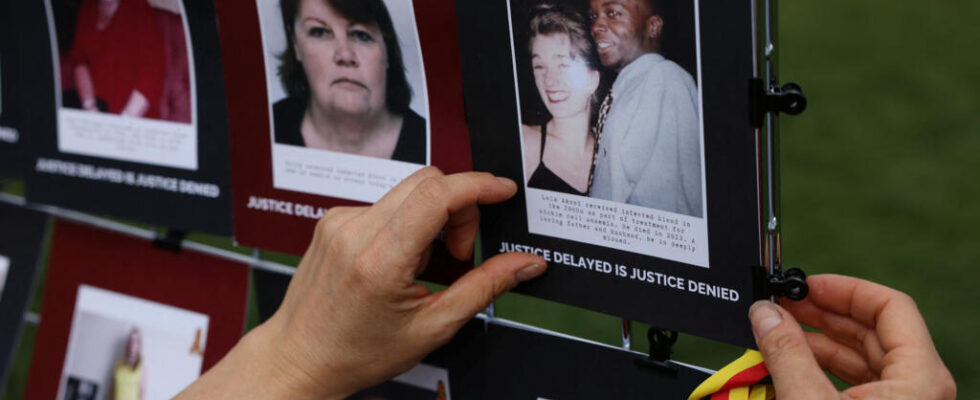The conclusions of the report on the tainted blood scandal were damning for the authorities at the time. Judge Brian Langstaff, who chaired the inquest, believes that thousands of deaths could have been avoided, and that successive governments and other relevant authorities ” did not put patient safety first “.
4 mins
From our correspondent in London,
A good part of the infections, not all but a good part, could and should have been avoided. This disaster is not an accident nor a question of “if we had known”. In its 2,500-page report, the public inquiry team identifies a series of collective, individual and systemic errors.
Read alsoUnited Kingdom: 50 years after the contaminated blood scandal, a public inquiry presents its report
Among these errors: the government’s lies and slowness in testing blood donations, the lack of self-sufficiency of the United Kingdom regarding blood products and the importation of American blood. Treatments for hemophilia should never have been approved. On the health side, doctors did not always inform patients of their serological status. And certain archives, certain medical files were destroyed.
But the most shocking concerns the health authorities and doctors. Clinical trials were carried out on hemophilia patients, without their consent, some caregivers knowingly prescribed infected products, to “see” how HIV was evolving. For the judge at the head of the investigation, “ each breach is serious in itself. The sum of these failings is a calamity. »
An upcoming trial?
Contaminated blood is called “ worst health disaster in British hospital history », of state scandal too. The contaminations took place in the 1970s and 1980s. And if the investigation only makes its conclusions now, it is, according to Judge Brian Langstaff, because there was a will at the head of the State and health authorities to hide the truth, “ to save face and avoid expenses “. Because who says fault of the State says payment of compensation. In the 2000s, they were estimated at nearly 4 billion euros for all victims and their families. There was also the fear of legal convictions as we saw in France in the 1990s. For the moment, prosecutions are not expected: the very British system of the public inquiry does not does not have the power, even if justice can now take action. In any case, the report does not cite a “culprit” by name and insists on the systemic nature of the scandal.
For the moment, journalists have not been allowed to speak with the victims and their families. They have been waiting for decades for this report and so far they have only had a few hours to go through the 2,000 pages and digest the contents of the report. This publication will undoubtedly be greeted with relief since infected people have been campaigning for years to “obtain justice”, and for the State and the health system to admit that they were not victims of bad luck, decades that they claim to have been victims of non-consensual clinical trials, and that they feel ignored, despised. The report is therefore, for them, an official recognition. A first press conference is to be held on May 20, 2024.
Also listenContaminated blood: when treatments kill
Rapid compensation for victims recommended
Judge Langstaff makes a dozen recommendations in his report. The first is the rapid payment of compensation. It is estimated that a victim dies every four days, so there is an emergency. The judge demands the presentation of official apologies, the establishment of a culture of transparency in hospitals and a greater place for patients to speak.
Another recommendation concerns transfused patients specifically; more general screening is needed. The people who received high-risk blood bags were never identified and some remain undiagnosed.
The inquiry gives the government one year to implement these recommendations. The Prime Minister could speak in Parliament late this afternoon.
►View the report here
